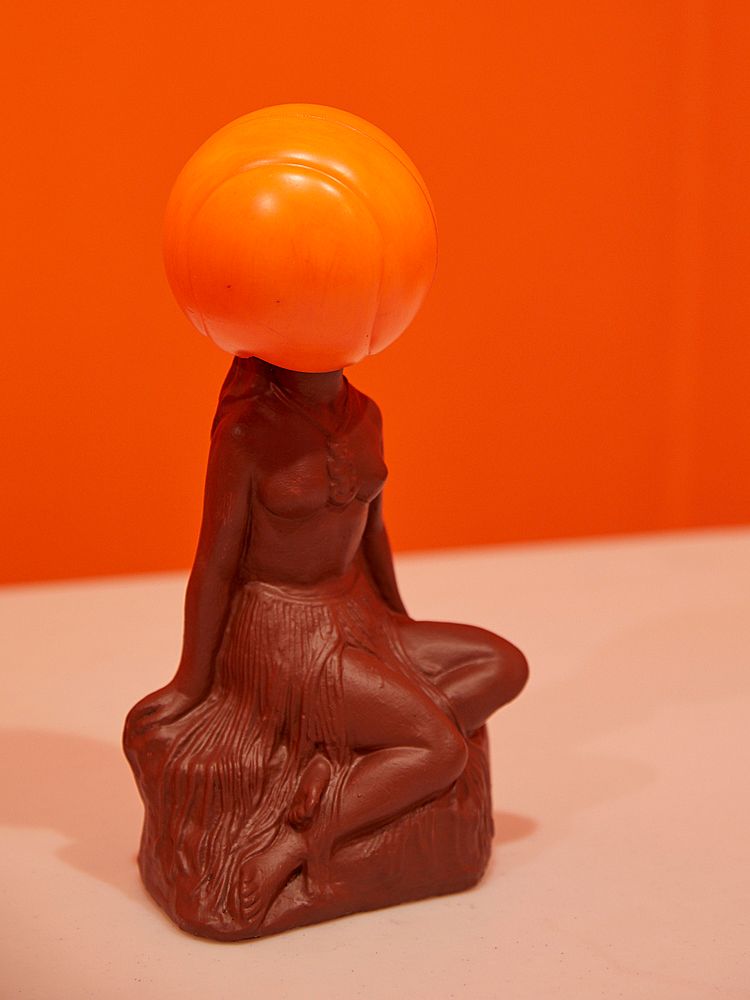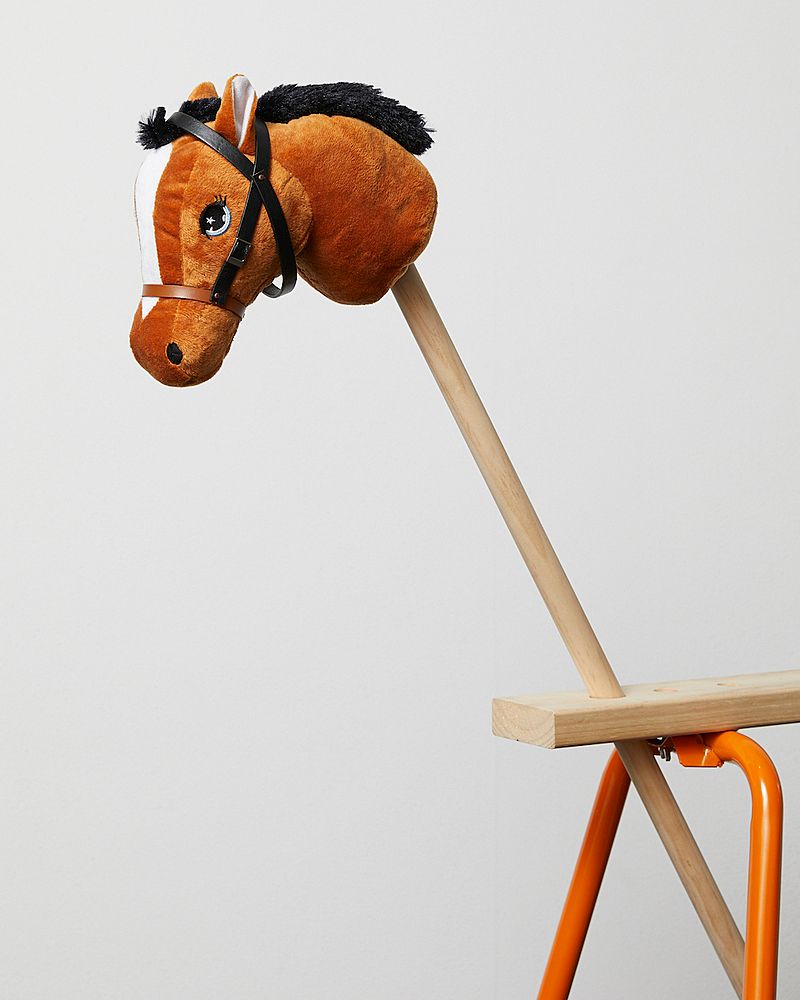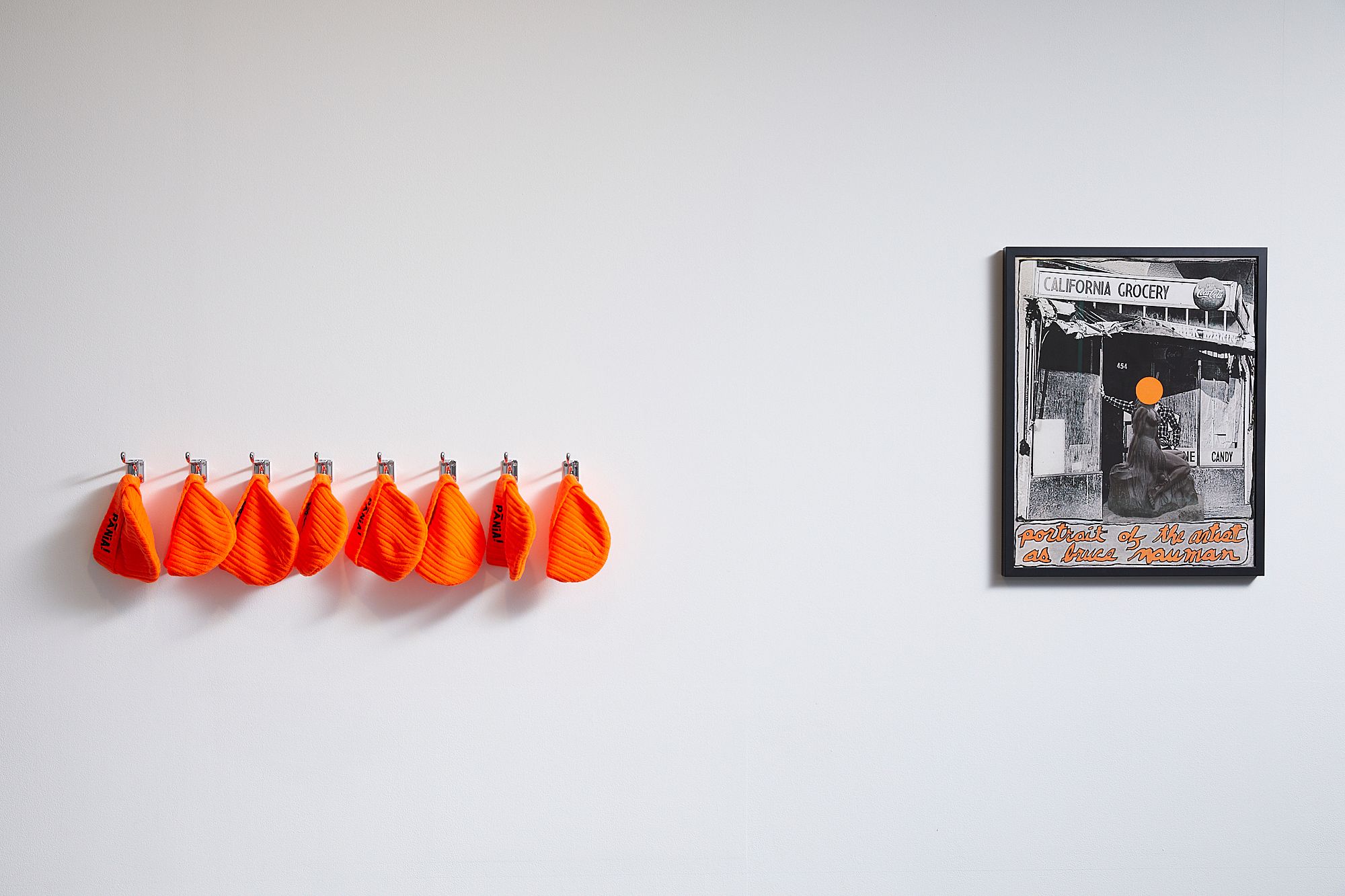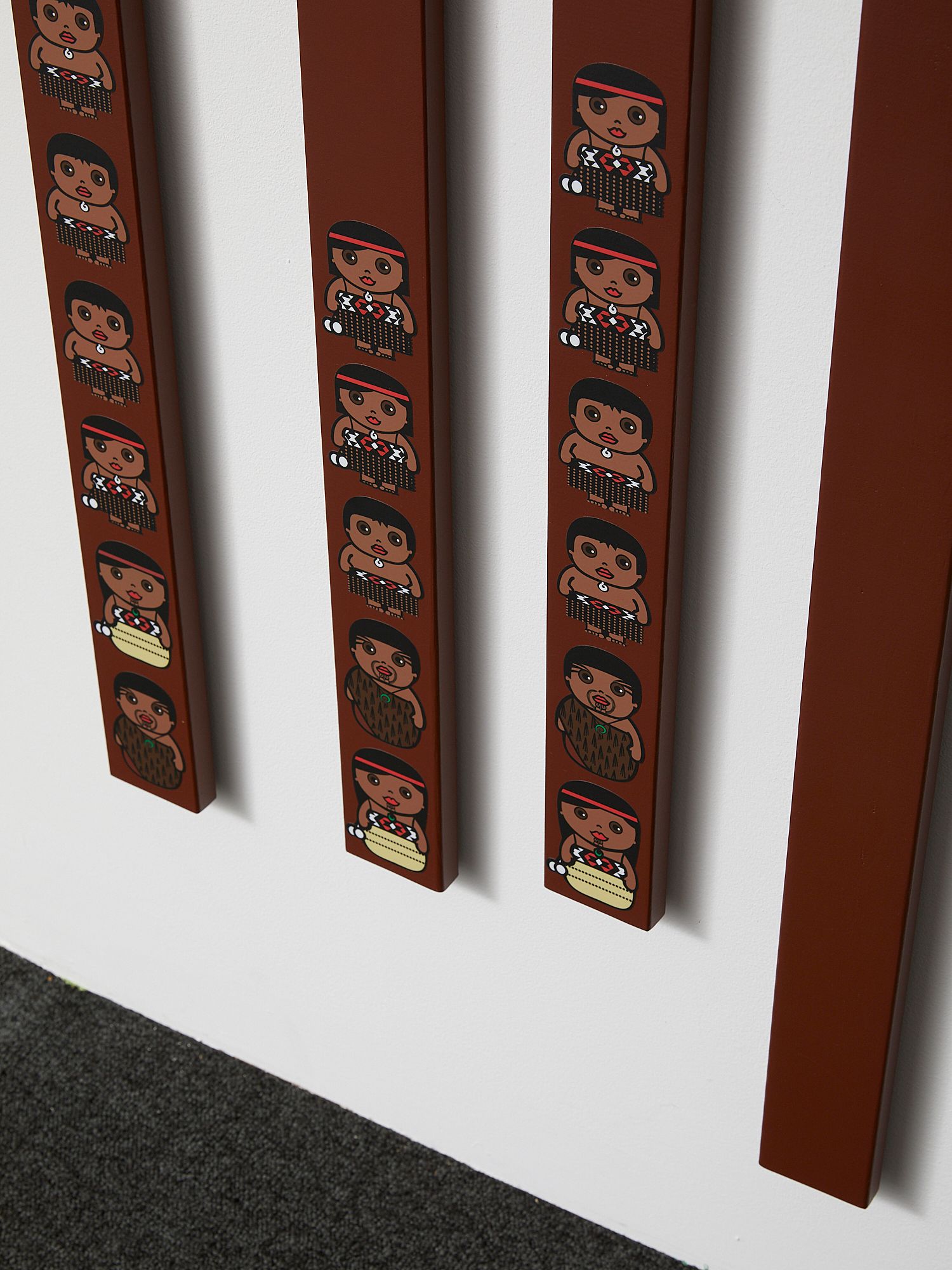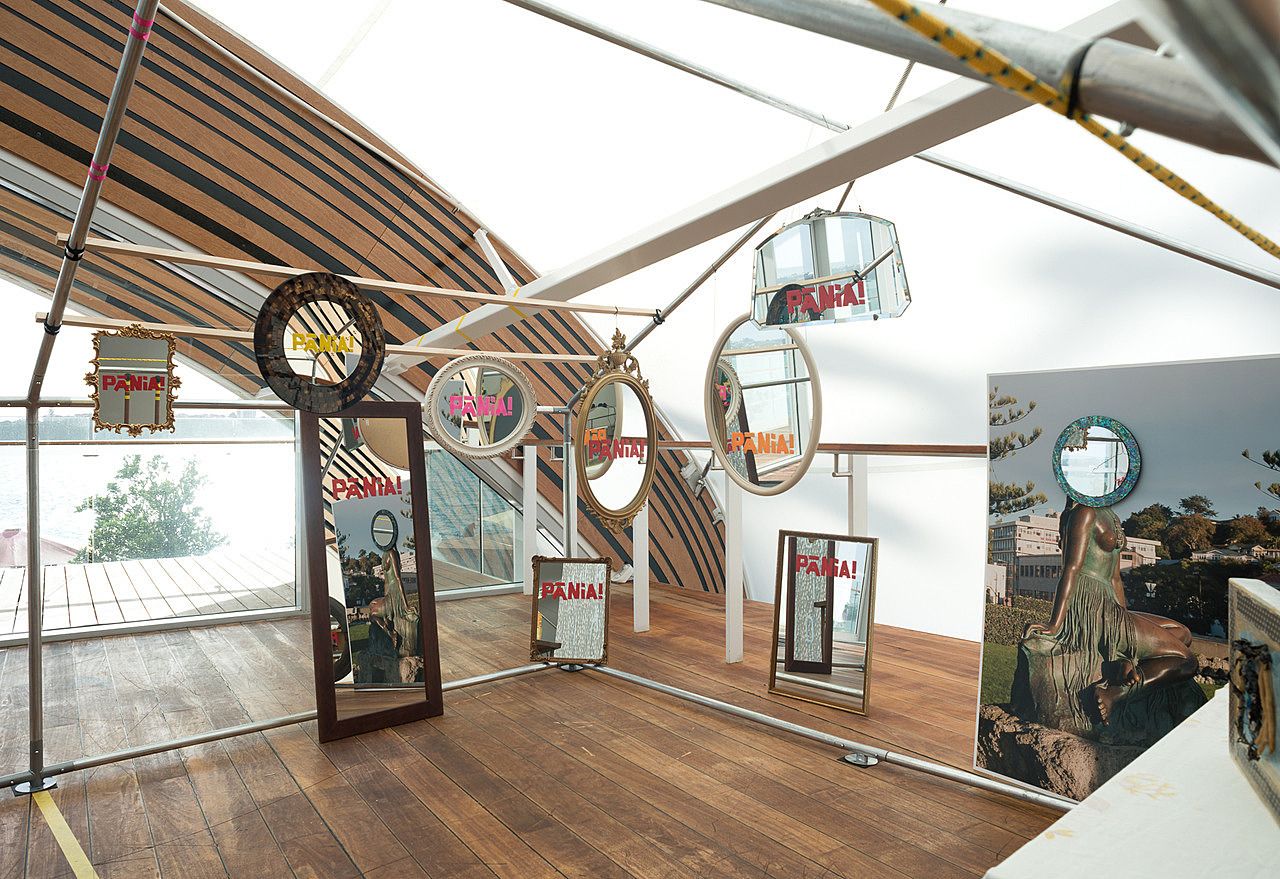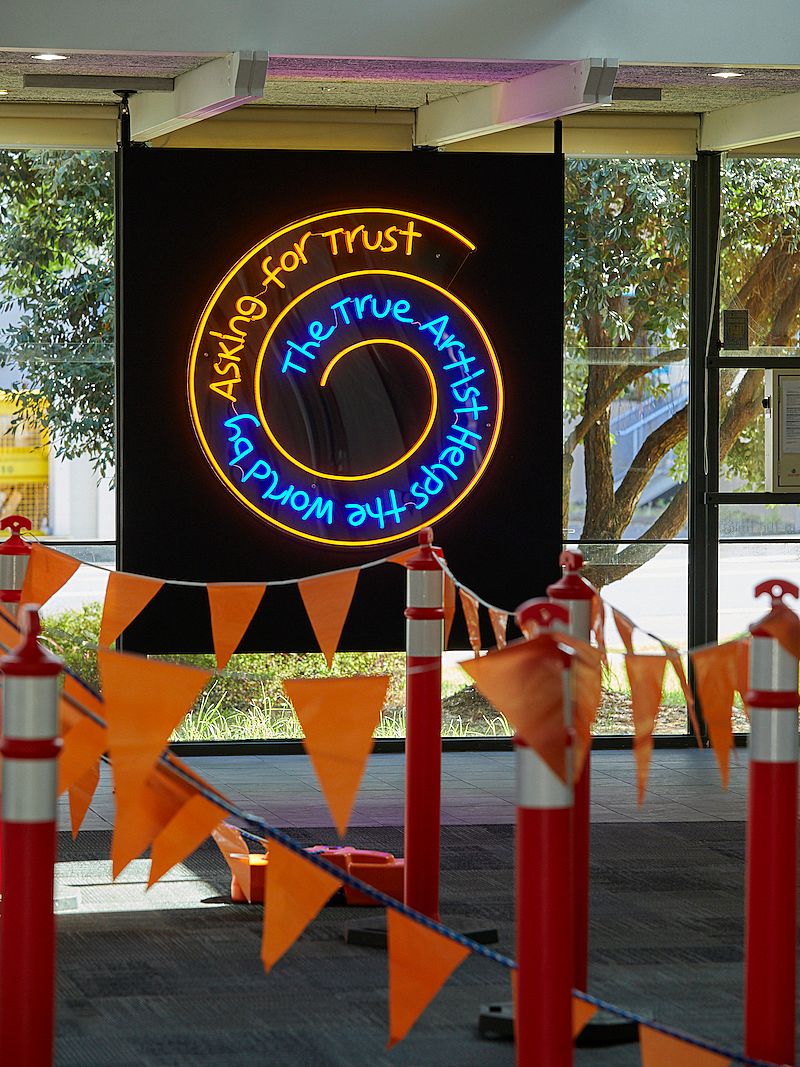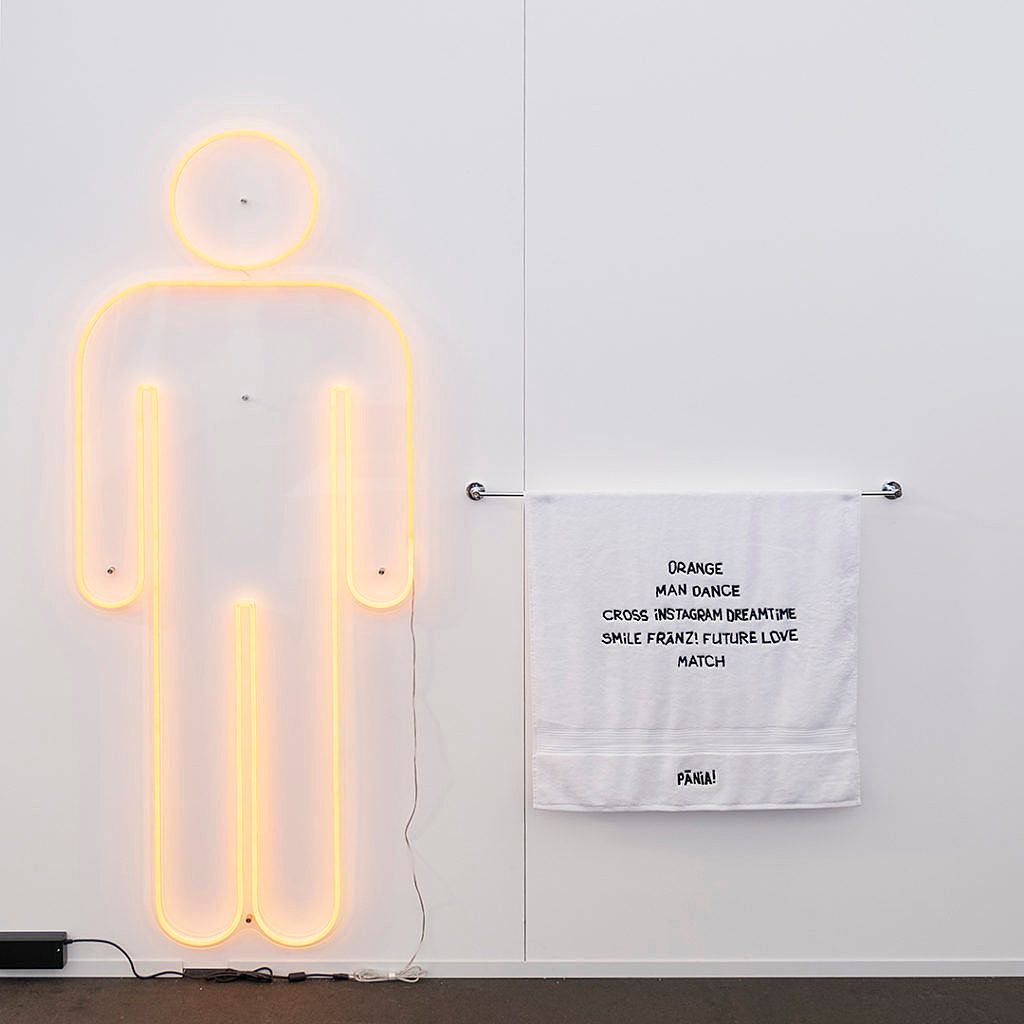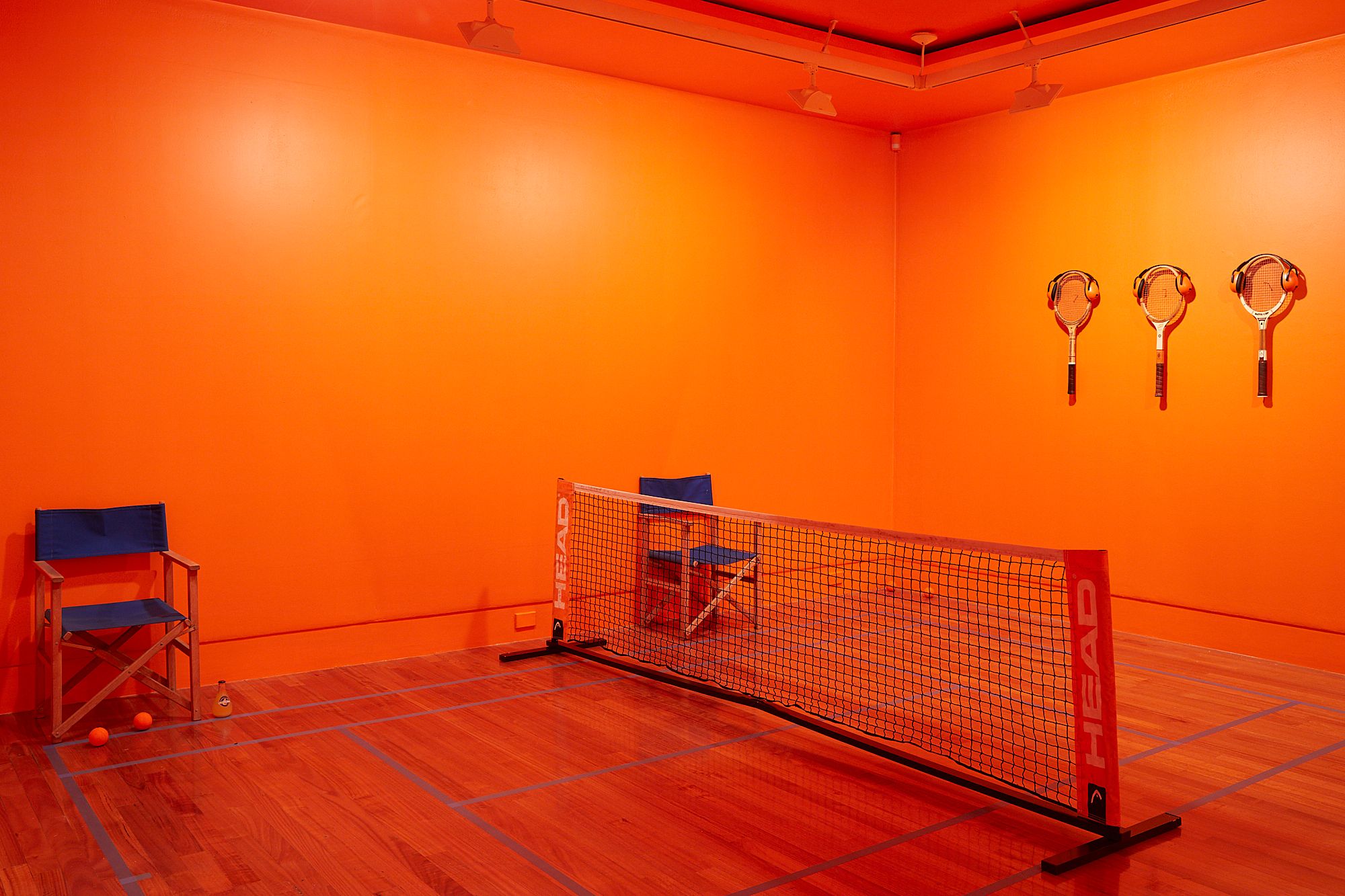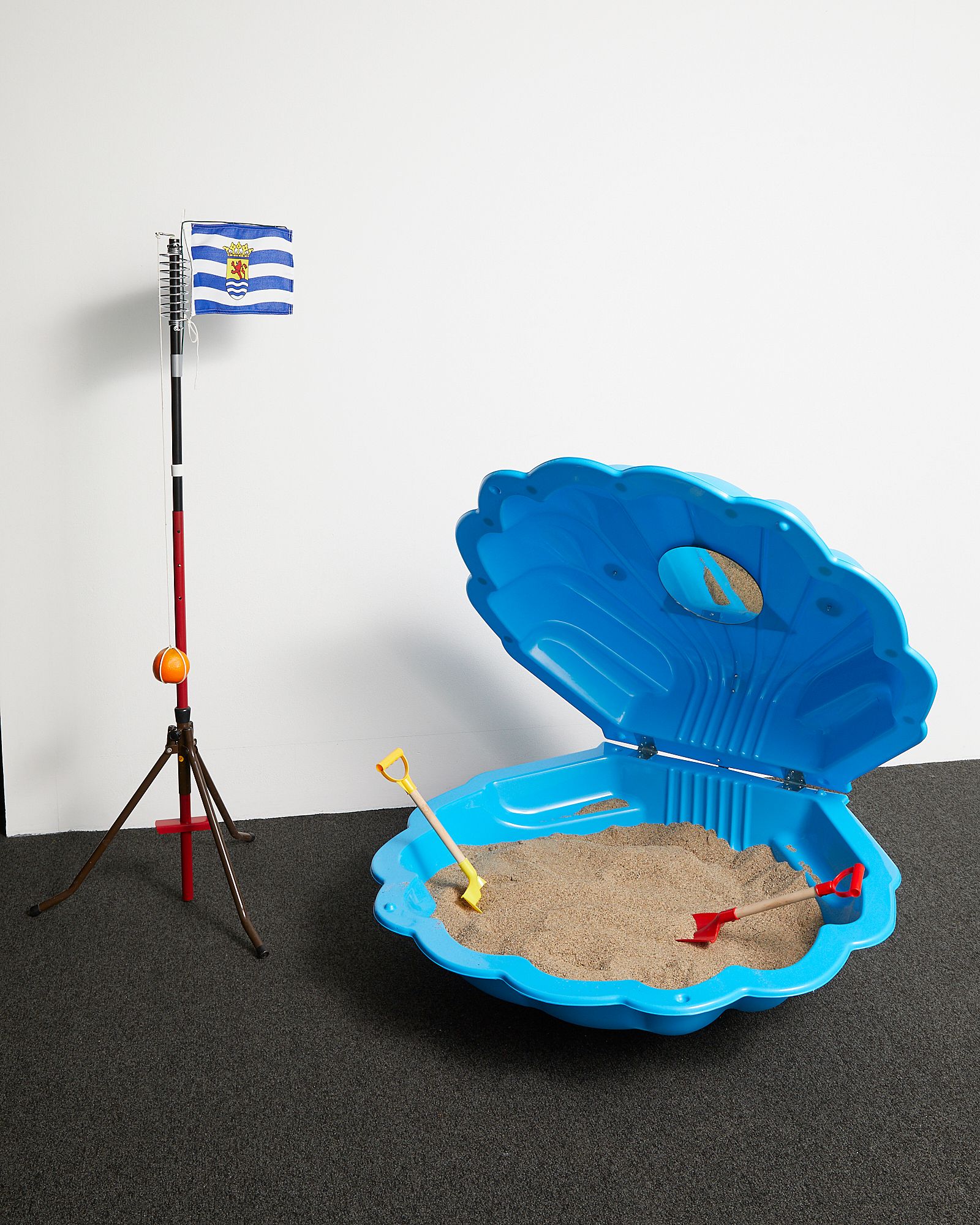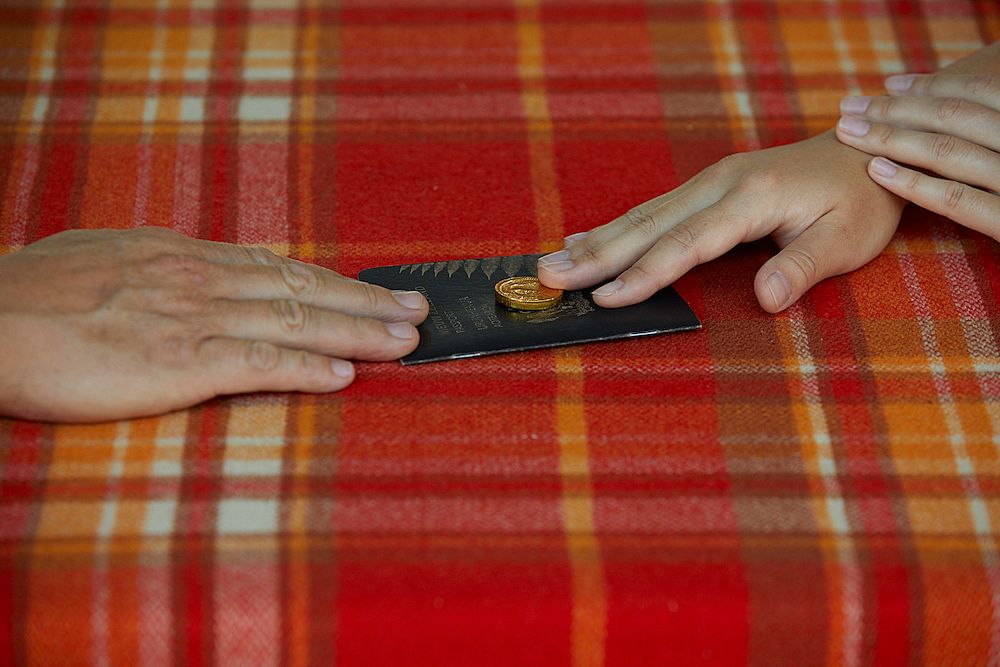Serious Fun: Who the Heck is PĀNiA!?
Unravelling the mysterious über-cool-girl of Mokopōpaki.
Unravelling the mysterious über-cool-girl of Mokopōpaki.
Ka tīaho mai he marama pai,
puta pō rere wai, mai a Pānia.
When the night is still and the moon is clear,
you can see Pānia appear.
– Sam Freedman (nā Alby Bennett i whakamāori)
Let’s begin by addressing the elephant in the room, or – given the artist’s enthusiasm for all things equine – the thoroughbred in the room: who the heck is PĀNiA!? In the literature put out by Mokopōpaki, the art space on Karangahape Road with which she is associated, she has been referred to repeatedly as an “enigmatic but always interesting über-cool-girl, artist-about-town.” PĀNiA! is so cool, in fact, that we don’t know who she really is. When she pounds the pavement, it is without paparazzi. Her chosen anonymity has led to some daring guesswork. In a recent review of her current exhibition-cum-performance project at Te Tuhi in Pakuranga, The True Artist Helps the World by Asking for Trust, critic John Hurrell ventures that she is “of Māori and Dutch extraction”, presumably basing this on the content of a number of the works on show, since the idea has not been put forward anywhere else.
More than a few people I’ve spoken with have suggested that PĀNiA! might be neither a woman nor Māori, despite presenting as both. The notion is theoretically possible, but I’m inclined to think it is folly. I don’t buy that PĀNiA! is invested in falseness. The True Artist Helps the World by Asking for Trust, is not, in my estimation, asking for faith as a prelude to hoodwinking the visitor. It is asking for it despite the withholding of expected information: a full name, a date of birth, a whakapapa. Like her ostensible namesake Pānia of the Reef (famously represented in a romantic statue in Ahuriri Napier, which appears several times in the exhibition), PĀNiA! moves between worlds. She is legendary.
Yet PĀNiA! is not a wholesale fiction. As the artist recently put it in an email to me (we communicate only by email): “She is a real person. She is a mystery. Something like that.” If she is mysterious, she is paradoxically frank, open about what she does. Or people close to her are. As with other artists, anonymous and not, who work with Mokopōpaki, PĀNiA!’s shows are attended by comprehensive (and always gorgeously well-designed) catalogues, which explore the many facets of individual works and point to the ideas and strategies that characterise her practice more broadly. The booklets do not sit outside the shows, as curatorial addenda, but are integral, being developed by the artist in close collaboration with her whanaunga at Mokopōpaki.
The temptation is to read the gesture immediately and essentially as an institutional critique
The publication accompanying her Te Tuhi show runs to 40 pages including covers (the hardcopy version is printed on coloured papers that echo the hues and themes of the project) and centres on an extensive sports-commentary-style text, not unlike a script for a piece of absurdist theatre. This describes a tennis-like ‘Artist versus Curator Exhibition Match’ between PĀNiA! and ‘Defending Champion’ Gabriela Salgado. The Artistic Director of Te Tuhi since early last year, Salgado is described elsewhere as a co-curator of the show, alongside Mokopōpaki and the artist. The commentators are identified as Jacob Tere (AKA Jacob Terre, Jacob Raniera etc.), ‘Keeper of the House’ at Mokopōpaki, and an associate called Kohine. (The word kōhine may be translated in English as ‘girl’ or ‘maiden’. Interestingly, the usage example given on the online Māori Dictionary includes the term pania, meaning, among other things, to smear or to paint.)
The commentary points to a central conceit of the project as a whole: the notion of exhibition-making as a game between artist and curator, or between artist and institution-as-represented-by-curator. The temptation is to read the gesture immediately and essentially as an institutional critique. Woe that galleries have become spaces in which star curators compete with artists for attention! It is perhaps worth recalling that PĀNiA!’s solo presentation at the 2018 Auckland Art Fair, ONE OF ALL, included a work titled ATTENTION/PLEASE/PAY/PLEASE (2018). Based on American artist Bruce Nauman’s PLEASE/PAY/ATTENTION/PLEASE (1973), and handed out for free, the work acknowledged not only the commercial context of the fair, but also the pressure on artists to proclaim their presence and value, so as not to be overlooked and under-analysed.
But there are other, and arguably more important, ways of reading the match motif. It might equally be understood as a cooperative negotiation and mutually enjoyable exchange. Artist and curator play a decorous game-of-rules, each with a specific agenda to push, but each also pushing the limits of the other. As it happens, I’ve experienced such a game; I’ve played with PĀNiA! myself. Last year, she participated in Projects 2018, the non-commercial presentation within Auckland Art Fair co-curated by Salgado and me, producing a series of witty way-finding signs pointing visitors to the area occupied by ONE OF ALL. This year, as sole curator, I invited her to nominate another artist to participate in Projects 2019, titled Whanaungatanga. (My intention in using this title was to acknowledge Mokopōpaki’s influence on my thinking, to embody my belief in the importance of kaupapa Māori, and to quietly counteract Pākehā devaluation of te reo.)
PĀNiA! found a way to turn my rather ‘institutional’ position into an invitation to a deeper kind of trust
As with the other ‘alumni’ I called on, I invited PĀNiA! to hand over the project or to work with her chosen newbie. Her initial desire was to fulfil an ambition expressed in ONE OF ALL to work directly with Nauman, but for one reason or another this did not eventuate. PĀNiA! then proposed to present another work based on the example of the ‘superstartist’. I quibbled, suggesting that what she had in mind was not really in line with my curatorial objectives, representing less a collaboration and more an homage or détournement. PĀNiA! answered this by positing a collaboration with me, by which I would provide a series of lists that she would convert into a Nauman-like word stack. PĀNiA! found a way to turn my rather ‘institutional’ position into an invitation to a deeper kind of trust. She also showed up the limitations of my declared intention to cede curatorial control. Advantage, PĀNiA!
Our match, inevitably, did not end there. When it came time to write texts for the various projects, PĀNiA! and I again found ourselves in a competition of wills. I wished to insinuate my voice into the 200-odd words allocated to her work. PĀNiA! had her own way of doing things. We went back and forth a bit by email. A couple of details she wished to include perplexed me, not least because the work was still in development and I was basing my thinking and writing on a proposal alone. I kept trying to edit the text such that it made sense to me. Ultimately, I permitted some of PĀNiA!’s phrasing to remain in, but the blurb was not precisely as she wanted it. Nor was I wholly convinced by the result. We were, at best, at deuce.
The poem can be read as a rather personal message to me, and – surprise, surprise – I am tempted to so read it
When the fair opened, I was surprised to discover that the resulting work, Nounman, had shifted significantly from what had been proposed. Particular phrases that PĀNiA! had wanted to include in the write-up made perfect sense, or would have, had I put my faith in her and run with them. The key elements planned were there. As promised, the project centred a large LED neon modelled on the form of a ‘universal man’ of the sort found in signage for bathrooms. However, where I had expected to see a large number of words riddling the male body, and carved out of the lists I had supplied, PĀNiA! presented just eleven, reshaped into a didactic cinquain and embroidered on a lily-white towel with which the figure might cover his shame (should he wish to): “ORANGE / MAN DANCE / CROSS INSTAGRAM DREAMTIME / SMILE FRĀNZ! FUTURE LOVE / MATCH.”
The poem can be read as a rather personal message to me, and – surprise, surprise – I am tempted to so read it. It includes references that hold special meaning for me. Dancing, for instance, appears in a recent piece I wrote about Shannon Novak’s Sub Rosa. I use Instagram entirely too much. I am an inveterate insomniac with a deep interest in Australian Aboriginal cultures (long and not entirely unproblematic story). FRĀNZ! is a name by which PĀNiA! has come to call me. The closing ‘match’ is beautifully ambiguous. I like to think of it as a subtle statement of triumph: game, set, match, PĀNiA! Coupled with the preceding ‘love’, it recalls my partner, whom I had mentioned in my lists. It also reminds me of a comment made by the artist when I contacted her for this piece. Being overly busy, she declined to “play interview tennis” but noted, “Quite like to do this in future, possibly as a doubles team.” Today’s opponent can be tomorrow’s mate.
In his review of The True Artist Helps the World by Asking for Trust, Hurrell suggests that the catalogue “tends to overdetermine the show’s meaning.” I understand what he’s getting at. The text is extravagantly detailed in its unpacking. Reading it post-visit became something of a sport for me. Was there a reference I could spot that hadn’t been included? Orange Ballroom (2019) must surely be referring to the Orange Coronation Hall at the top of Newton Road. Yes, there was the acknowledgment on page 20. But, aha!, I couldn’t see a direct mention of the hall’s association with the Protestant Orange Society, which is in turn associated with the Dutch House of Orange, which ties in with the Dutchman Abel Tasman, who is named in connection with another work, The Merchant Was Here (2019) – to say nothing of the spinoff show, The Dutch Embassy, now on at Mokopōpaki.
Which is to say that – despite a high level of catalogic determining – there are plenty of meanings lying in the exhibition sand to be dug up. I find myself digging away with particular fervour at Pakuranga Customs House/Attitude Arrival Lounge (2019), which is treated only briefly in the commentary. Here, visitors are invited to acquire a passport to a PĀNiA! ‘artventure’. The artist plays cut-and-paste with the Aotearoa example of the document. She keeps a favourite feature of mine: diverse traversers of the moana shown on the pages for kōkota or visas (seabirds, waka, Pākehā ships). On the cover, she replaces ‘New Zealand’ with the Dutch ‘Nieuw Zeeland’, symbolically passing over James Cook (and at precisely the time of the 250th anniversary of the ‘arrival’ of his fleet) in favour of Tasman, who could have been a cross-cultural tennis player if only he had picked up a racquet instead of kicking up a racket.
... all of us (even the grown-ups) should be able to explore ideas by having fun
I’m unsure whether PĀNiA! intends to nod towards Simon Denny, who memorably commissioned a documentary on the New Zealand passport as part of his Freeview Passport: CD NZ presentation (2012). Perhaps, instead, she intends a reference to Dr Sandy Adsett (Ngāti Kahungunu), who was central to the design of this much-loved carrier of national identity. Possibly it’s a question of neither. The game of engaging with the work of an artist is, of course, to construct your own meanings and feel your own resonances. Beyond any crowd-pleasing spectacle, any gasp-inducing demonstration of canniness and virtuosity, that is the fun of the art game. And PĀNiA!, it seems, is all about that. As the commentary notes, “all of us (even the grown-ups) should be able to explore ideas by having fun.”
The catalogue on the whole is imbued with this message. The text patently has fun playing with form. In places, it is more transactional, educating in the way that wall texts in larger institutions do. In others, it is marked by knotty, poetical wordplay, suggesting the performative erudition of so many turgid curatorial provocations. Ultimately, though, it’s just a rollicking good time, made to delight all of us who claim to love art but sometimes get a bit hung up on the serious side of things, fixating on the element of high-stakes competition, and forgetting the more fundamental element of diversion. Stopping by Mokopōpaki, and engaging in the kōrero that is so essential to the space, I am confirmed in this understanding by Keeper Tere. “Lately,” he says, “I’ve been challenging myself to sum up artists using just one word each. I’ve decided that Fiona Connor’s word is ‘record’. Simon Denny’s is ‘inform’.” And PĀNiA!’s? “Oh, PĀNiA!’s is ‘entertain’.”
The mystery simply adds to her appeal
If entertainment is PĀNiA!’s primary objective, then her anonymity, that old horse-chestnut, might be understood to serve the same purpose. Undoubtedly, it makes for a good story. Children, Tere tells me, have no trouble grasping that notion. They accept the fact that the artist prefers to remain elusive, like a character from a fairy tale or a being from a time or space a bit different to our own. The mystery simply adds to her appeal. Adults are the ones who have more difficulty, wanting to read the decision as something dishonest or as a rather dry art historical or theoretical reference, evoking antecedents, such as Marcel Duchamp or (closer to home) et al., who have experimented with ‘masks’ with little or no actual anonymity.
No doubt, there’s a measure of quotation going on. But Tere indicates that being unknown in the conventional sense also gives PĀNiA! a certain freedom. It makes her feel safe, allowing her to play without being too exposed, too invasively scrutinised. And, as a consequence, every one of us in the arena gets to win.
This piece is dedicated to the late Roger Blackley with much love.
The True Artist Helps the World by Asking for Trust
Works by PĀNiA!
A collaboration between Mokopōpaki and Te Tuhi
Co-curated by Gabriela Salgado, Artistic Director, Te Tuhi; Mokopōpaki; PĀNiA!; and the artists
23 March – 19 May 2019
This piece is presented as part of a partnership with Te Tuhi. They cover the costs of paying our writers while we retain all editorial control.
